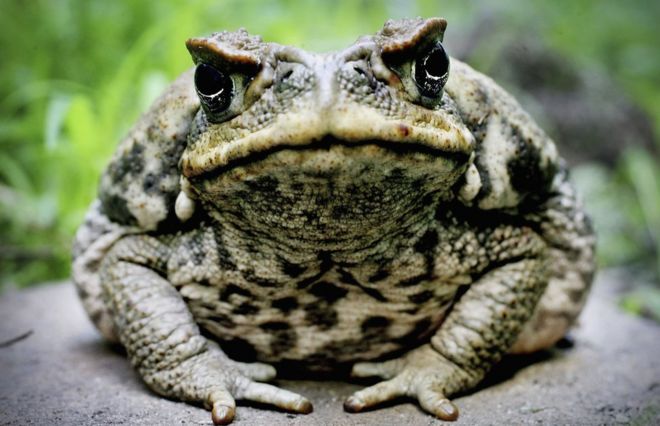The rapid spread of Australia's cane toad pests
 They are poisonous intruders that have vanquished swathes of northern Australia as they proceed with their apparently irrepressible walk west towards the Indian Ocean.
They are poisonous intruders that have vanquished swathes of northern Australia as they proceed with their apparently irrepressible walk west towards the Indian Ocean.Stuffed with toxic substance and remarkably versatile, the feared stick amphibian, or Bufo marinus, has couple of companions in Australia, where a huge logical and group exertion has neglected to stop their progress.
"They most likely have moved about part of the way through that tropical locale of Western Australia," clarified Rick Shine, an educator in science at the University of Sydney. "They are in extremely difficult to reach nation now in the Kimberley. It is difficult to get point by point data on precisely where the front is yet it is by all accounts moving at 50 to 60km (31 to 37 miles) per annum."
The warty creatures of land and water move just amid the wet season. Despite the fact that following reviews have indicated many bounce under 10 meters a day, those at the forefront have become greater and quicker.
"The folks at the intrusion front up in the tropics are moving regularly kilometers in a solitary night and they have advanced this exceptionally unmistakable conduct," Prof Shine told the BBC.
Delineate
"They've really developed contrasts fit as a fiddle and physiology too. Basically they have transformed into these dispersal machines and they move the extent that they can, as quick as possible."
Specialists are hesitant to hypothesize on what number of these unwelcome irritations have been unleashed over Australia's north. They are productive raisers - a few evaluations put the figure at around 1.5 billion - yet it is difficult to know without a doubt.
Australia has a long and discouraging history of coincidentally presenting destroying ball species as pets and domesticated animals, or for game. Cases incorporate foxes, pigs and rabbits, goats, camels and felines.
Obtrusive plants and fish have likewise dramatically affected local vegetation, however it is the stick frog that is generally censured most importantly else.
How could they arrive?
For Australia, the terrible story started in the sugar stick ranches of Puerto Rico, which had imported mammoth frogs from South America to eat the grubs that were eating up the yield.
Word spread of the triumphs of these bug-getting creatures of land and water and by the 1930s, the stick amphibians were being sent far and wide. In 1935, 101 frogs touched base in Far North Queensland in territories including Cairns and Innisfail, before being reared in bondage. Their offspring was discharged on missions to chase and murder stick decimating bugs on Australia's north-east drift.
Group frog "marshals" have trapped innumerable numbers throughout the years. In 2005 David Tollner, a previous government MP, broadly encouraged Northern Territory occupants to help squash the issue with their golf clubs and cricket bats - viably transforming annihilation into game.

Post a Comment